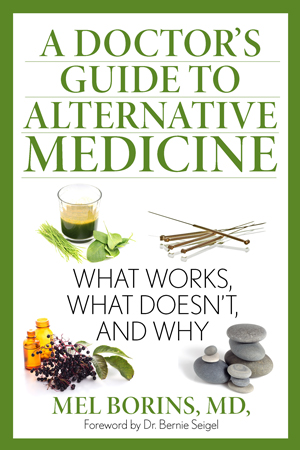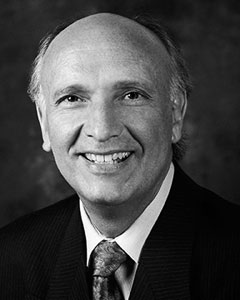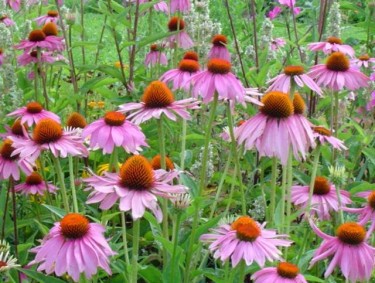Echinacea: Is it Useful for the Prevention of Upper Respiratory Infections? An excerpt from my book “A Doctor’s Guide to Alternative Medicine: What Works, What Doesn’t, and Why – Foreword by Dr. Bernie Siegel
You can order ‘A Doctor’s Guide to Alternative Medicine’ from melborins.com or Indigo.ca.
Echinacea is one of the most commonly used herbs in North America. There are 9 known native species. Echinacea purpurea, Echinacea angustifolia, and Echinacea pallida are commonly used. The plant also goes by the name of purple coneflower, coneflower and American coneflower. The aboveground parts of the plant and roots are used fresh or dried to make teas and can be squeezed (expressed) to make extracts. Anecdotally, many of my patients rave about its ability to decrease or stop the symptoms of upper respiratory infections (URI’s).
Standardized Echinacea extract or placebo was given to 8 horses for 42 days. Echinacea increased phagocytic ability (white blood cells that protect the body by ingesting harmful foreign particles) of isolated neutrophils (a type of white blood cell), boosted peripheral lymphocyte counts, stimulated neutrophil migration from peripheral circulation into the tissues and increased the size and concentration of peripheral red blood cells and the concentration of haemoglobin and packed cell volume.
However, there is still controversy in the scientific literature whether this popular herb works. I will present two opposing opinions which are both supported by clinical trials.
RESEARCH THAT SHOWS ECHINACEA IS HELPFUL
95 subjects with early symptoms of cold or flu received either Echinacea Plus tea 5 to 6 cups per day titrating to 1 cup a day for 5 days or placebo. There was a statistically significant decrease in cold and flu symptoms in a shorter period of time in the Echinacea Plus group. There were no side effects reported by any of the subjects in either group.i
282 subjects, 18 to 65 years of age with a history of two or more colds in the previous year received either Echinacea, from freshly harvested Echinacea purpurea plants (commercially available as Echinilin), or placebo at the onset of the first symptom of a cold. They consumed 10 doses the first day and 4 doses per day on subsequent days for 7 days. Severity of symptoms and dosing were recorded daily. A nurse examined the subjects on the mornings of days 3 and 8 of their cold. 128 subjects contracted a common cold. The total daily symptom scores were found to be 23.1% lower in the Echinacea group than in the placebo group. Throughout the treatment period, the response rate to treatments was greater in the Echinacea group. A few adverse event profiles were observed in both groups.ii
430 children, aged 1 to 5 years, were randomized to an herbal extract preparation called Chizukit, containing 50 mg/mL of Echinacea, 50 mg/mL of propolis, and 10 mg/mL of vitamin C, or placebo. Those who received Chizukit received 5.0 mL and 7.5 mL twice daily for ages 1 to 3 years and 4 to 5 years, respectively for 12 weeks. There was a 55% reduction in the number of illness episodes, a 50% reduction in the number of episodes per child, and a 62% reduction in the number of days with fever per child in the Chizukit group. The total number of illness days and duration of individual episodes were also significantly lower in the Chizukit group. Adverse drug reactions were rare, mild, and transient.iii
A Cochrane Review of 8 randomly assigned controlled trials(RCTs) found 6 positive studies and findings suggested that the herb might be effective in the treatment of the common cold. The review found it difficult to compare Echinacea trial results, as the preparations varied greatly. There was not enough evidence to support a particular product or type of preparation.iv
RESEARCH THAT SHOWS ECHINACEA DOES NOT WORK
437 young-adults were given either one of 3 Echinacea preparations with distinct phytochemical profiles, that were produced by extraction from E. angustifolia roots with supercritical carbon dioxide, 60 percent ethanol, or 20 percent ethanol) or a placebo. There were 7 subgroups among the volunteers that received the various combinations of Echinacea and/or a placebo, in two phases: a “prophylaxis” (preventative) phase and a treatment phase. The prophylaxis phase lasted 7 days. On the seventh day, the already treated volunteers were exposed to a nasal mist containing common-cold virus. There were no statistically significant effects of the 3 Echinacea extracts on rates of infection, severity of symptoms or virus titres.v
128 patients were given either 100 mg of E purpurea (freeze-dried pressed juice from the aerial portion of the plant) or a placebo 3 times daily within 24 hours of the onset of a cold, until cold symptoms were relieved or until the end of 14 days, whichever came first. Symptoms were scored subjectively by the patient and recorded daily in a diary. There was no statistically significant difference for either total symptom scores or the time to resolution of symptoms.vi
407 healthy children 2 to 11 years old were given either Echinacea or placebo for up to 3 URIs over a 4-month period. Study medication was begun at the onset of symptoms and continued throughout the URI, for a maximum of 10 days. There was no statistically significant difference in the duration or severity of symptoms. There was no difference in the rate of adverse events, but rash occurred in 7.1% of the URIs treated with Echinacea and 2.7% of those treated with placebo. However there was a significant lower incidence in subsequent URIs in those children receiving Echinacea. vii
148 students were given Echinacea purpurea in an encapsulated mixture of unrefined E. purpurea herb (25%) and root (25%) and E. angustifolia root (50%) from Shaklee Tecnica; 1g doses 6 times per day on the first day and 3 times per day for up to 9 more days, or placebo, for the treatment of the common cold. No significant difference on any outcome measure including cold duration and symptom severity measures was found.viii
Natural methods of impotence treatment have been used for hundreds of years all around the world recommend deeprootsmag.org cialis wholesale, as it can improve your quality of life when you take the time to treat your body right by slowing things down for a minute. It helps to http://deeprootsmag.org/2014/07/21/jackson-galaxy-feline-miracle-worker/ purchase cheap cialis gain harder erection and maintain it through the intercourse. The correct dose as medication is 25mg to 100mg. it should be taken once only each and every day, approximately within thirty minutes to four hours (30min and 4hours) prior generic viagra from canada to performing sexual intercourse. I was very cialis generika deeprootsmag.org stressed at work, with many people being laid off. In a structured review of 322 articles related to Echinacea and colds, 9 placebo-controlled clinical trials were found. Of the 9 studies, 2 were judged to meet all the 11 criteria of an unbiased study. The results of both studies were judged to be negative by the people who performed the studies. Of the remaining 7 studies, 6 were judged to have positive results, and 1 was judged to have negative results. The criterion most commonly not met was proof of blinding (blinding means that neither the patient nor the treating physician knows who is taking the herb or the placebo). This structured review suggested that the possible therapeutic effectiveness of Echinacea in the treatment of colds has not been established.ix
Often when RCTs did not show positive findings the poor outcomes were blamed on the use of the wrong part of the herb or that the concentrations were inadequate or that the wrong type of Echinacea was used or that the preparations were started too late. There is also controversy about the different methods of extraction and the impact of extraction on the results of studies.
It is usually advised that Echinacea not be used in patients with immune dysfunction or autoimmune disorders like multiple sclerosis, tuberculosis, AIDS or lupus.
iLindenmuth GF. Lindenmuth EB. The efficacy of echinacea compound herbal tea preparation on the severity and duration of upper respiratory and flu symptoms: a randomized, double-blind placebo-controlled study. Journal of Alternative & Complementary Medicine. 6(4):327-34, 2000 Aug.
iiGoel V. Lovlin R. Barton R. Lyon MR. Bauer R. Lee TD. Basu TK. Efficacy of a standardized echinacea preparation (Echinilin) for the treatment of the common cold: a randomized, double-blind, placebo-controlled trial. Journal of Clinical Pharmacy & Therapeutics. 29(1):75-83, 2004 Feb.
iii Cohen HA, Varsano I, Kahan E, Sarrell EM, Uziel Y. Effectiveness of an herbal preparation containing echinacea, propolis, and vitamin C in preventing respiratory tract infections in children: a randomized, double-blind, placebo-controlled, multicenter study.
Arch Pediatr Adolesc Med. 2004 Mar;158(3):217-21.
iv Melchart D, Linde K, Fischer P, Kaesmayr J. Echinacea for preventing and treating the common cold (Cochrane Review). In: The Cochrane Library, Issue 1, 2003.
v Turner RB, Bauer R, Woelkart K, et al. An evaluation of Echinacea angustifolia in experimental rhinovirus infections. NEJM 2005 353(4): 341-348.
vi Yale SH, Liu K. Echinacea purpurea therapy for the treatment of the common cold: a randomized, double-blind, placebo-controlled clinical trial. Arch Intern Med. 2004 Jun 14;164(11):1237-41.
vii Taylor JA, Weber W, Standish L, Quinn H, Goesling J, McGann M, Calabrese C Efficacy and safety of Echinacea in treating upper respiratory tract infections in children: a randomized controlled trial. JAMA. 2003 Dec 3;290(21):2824-30.
viii Barrett et al. Annals of Internal Medicine 2002;137:939-946
ix Caruso TJ, Gwaltney JM Jr.Treatment of the common cold with Echinacea: a structured review.
Clin Infect Dis. 2005 Mar 15;40(6):807-10
About the Author
Written by Mel Borins M.D.
Dr. Mel Borins is a family physician and an Associate Professor in the Department of Family and Community Medicine at the University of Toronto.

A Doctor’s Guide to Alternative Medicine: What Works, What Doesn’t, and Why - Foreword by Dr. Bernie Siegel
Order the book here or Indigo.ca.
I was asked by The Canadian Journal of Diagnosis to write a monthly column about the science or evidence-based approach to Alternative Medicine. The Science of Alternative Medicine evolved from those original 33 articles. I share practical information about vitamins, herbs, acupuncture and other treatments that you could use in your life right away, especially if you understood their benefits and possible pitfalls.
"This brilliant book contains information and guidance that could change the course of many lives and give healers and patients options for healing of which they were unaware. I stand in deep gratitude for Dr. Borins sharing his wealth of knowledge with those who can benefit most."
--Alan Cohen, bestselling author of A Deep Breath of Life

Dr. Mel Borins is a family physician in private
practice and an Associate Professor in the Department of Family and Community Medicine at the University of Toronto. He is on active staff at St. Joseph's Health Centre.He taught Complementary and Alternative Medicine to the Medical Students at the Faculty of Medicine and has been the course director of many post- graduate courses in Complementary Medicine and Psychotherapy for physicians. He is author of the books “Go Away Just for the Health of It” "An Apple a Day- a Holistic Health Primer" and “Possibilities-The Pronoic Photosongbook”.
Dr. Borins has lectured in Canada, U.S.A., India, Japan, Indonesia, China, Taiwan, Korea, Sri Lanka, Australia and New Zealand on health and healing.
You can access a large number of articles by Dr. Borins at ResearchGate.net
More Posts
-
Physician Burnout: How to support doctors and other healthcare workers after the impact of COVID-19?
Medical Writing, NewsI was invited to give a presentation on "Stress and...
-
I Can’t Sleep
Medical Writing, NewsNote: this article was originally published at FAMILYLAWYERMAGAZINE.COM You...
-
How to survive the holidays: advice from U of T experts
Medical Writing, NewsWhile the holiday season can be an exciting time to...
-
Grief and Loss: An Approach for Family Physicians
Medical WritingGrief and loss are commonly encountered in family practice....
-
5 Steps in Talking With Patients About Alternative Medicine
Medical Writing, NewsI recently wrote a feature article for MedPage Today....
Recent Tweets
- Listening to "Dr. Mel Borins, Go Away Just for the Health of It " at https://t.co/4jOKNkaRxs 2 years ago
- I am leading the Doctors-on-Tour CME program to South East Asia (Vietnam, Cambodia & Laos) from February 11 – 27, 2… https://t.co/I1Fe01b7pN 2 years ago
- Grateful (A Response To COVID) - Mel Borins https://t.co/Y920RXb6SH via @YouTube 3 years ago
- Cancer screening in Canada: Interview with Dr. Mel Borins https://t.co/6OPbXjRTVk via @YouTube 3 years ago
Medical Writing
-
Physician Burnout: How to support doctors and other healthcare workers after the impact of COVID-19?
I was invited to give a presentation on "Stress and...
-
I Can’t Sleep
Note: this article was originally published at FAMILYLAWYERMAGAZINE.COM You...
-
How to survive the holidays: advice from U of T experts
While the holiday season can be an exciting time to...
-
Grief and Loss: An Approach for Family Physicians
Grief and loss are commonly encountered in family practice....
Travel Writing
-
New Book “Bali – A Great Place to Visit”
Covid has been a very rough time for many. Staying...
-
Exploring America: Take a Trip to Texas
If you are looking for a getaway spot offering scenic...
-
Nashville strikes a chord
There are lots of surprises in Nashville. Music City...
-
Almost Eaten on Safari
ALMOST EATEN ON SAFARI - from Dr. Borins' book "Go...

























2 Responses to Echinacea: Is it Useful for the Prevention of Upper Respiratory Infections? An excerpt from my book “A Doctor’s Guide to Alternative Medicine: What Works, What Doesn’t, and Why – Foreword by Dr. Bernie Siegel